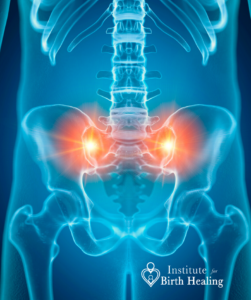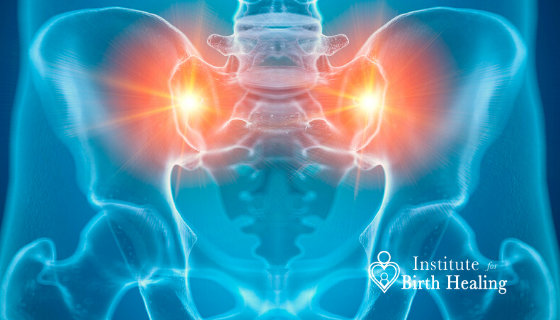Sacroiliac Joint Dysfunction- Part 1
Sacroiliac Joint Dysfunction Part 1- Scar tissue
Low back pain is a very common complaint with most people. There are many different structures in the low back area that can be causing the pain. The sacroiliac joint is one of the most common areas that can be in dysfunction creating low back pain.
While common treatments such as joint mobilizations, manipulations, stabilization exercises and stretches can be helpful for most cases, if your pain remains, you might want to look into to two other areas that may be causing your pain.
Do you have any scar tissue in your lower abdomen?
Scar tissue forms very haphazardly to help heal a wounded area, connecting to any tissues around the injured area. Until it learns how the tissues need to move, it limits the surrounding tissues mobility. In the lower abdomen movement alone is not enough to help release the restrictive nature of scar tissue. Manual mobilization of this scar tissue is important to help free up the organs and surrounding tissues in this area.
Scar tissue in your lower abdomen can cause sacroiliac joint dysfunction. Appendectomy scars, laparoscopic surgeries, cesarean sections and even seatbelt injuries from car accidents can create scar tissue in the lower abdomen. Since your organs are connected to your spine and pelvic bones, if scar tissue is restricting the organs mobility the body will protect the organs first. Whatever the organ is attached to will be pulled out of alignment.

With cesarean scarring the uterus can get anchored by scar tissue and pull on the sacrum because of it’s connection with the uterosacral ligaments . It is very common to have one side of your surgical scar more limited in mobility than the other side. Typically it’s the more restricted side of a scar that causes the sacrum on that side to get stuck and lack mobility. Restricting the sacral mobility can cause SIJ dysfunction. The junction between the small and large intestines, called the ilieocecal valve, sits right in front of the right SIJ and the sigmoid colon sits in front of the left SIJ. Any restriction in these two organ areas can cause dysfunction in the sacroiliac joint. Mobilization of the fascia around these organs can free up the connection to the sacroiliac joint.
I had a friend who came to see me as she had developed low back pain getting ready for a camping trip. She was bent over and couldn’t stand straight without pain. Not touching her back and just working on her 8 year old c-section scar alleviated her pain and she was able to go camping the next day. Two years later getting ready for another camping trip this same friend developed low back pain again and was considering not going on her trip. She had knee surgery earlier that year and had been hobbling around and I thought her pelvis was out of position causing her pain. Working just on her pelvis and low back in one session did nothing for her back pain. Seeing her the next day and just working again on her c-section scar completely relieved her low back pain and she was able to go camping. She is now able to massage her own scar and keep her back happy.
You can learn to massage your own c-section or any type of scarring in the abdomen by watching my video on how to massage your c-section scar.
It also doesn’t matter how long the scar tissue has been present as you can loosen it up at any point in time, even years down the road! Most of the women I see in my PT practice that have had c-sections may not have any problems until 10-15 years down the road. There are two other issues that c-section scarring can cause, read here to learn more.
Scar tissue in your lower abdomen, no matter what the cause, needs to be released to help free up and restore mobility to your sacroiliac joint so you can be pain free.
Stay tuned for part 2 of this post to learn of another area that is often not addressed in treating SIJ dysfunction.

